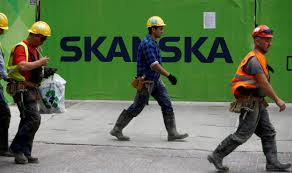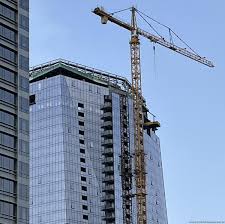
NEW YORK — The U.S. construction industry is facing one of its most unpredictable years in recent memory, according to Skanska’s Summer Market Trends Report, which paints a picture of an environment where shifting federal policies, steep tariffs, and escalating material costs have replaced the stability many had hoped for post-pandemic.
The firm’s analysis identifies “uncertainty” as the defining theme for 2025, a sentiment echoed across nearly every sector of the industry.
After years of grappling with COVID-19’s economic fallout — including surging prices, volatile demand, and a tech-sector bubble — many industry leaders entered 2025 expecting a gradual normalization. But instead, the first two quarters of the year have brought renewed turbulence.

Policy decisions from the Trump administration have complicated forecasts, with ripple effects felt from federal funding programs to local contracting bids.
“Owners are asking: Will our healthcare system still receive critical funding? What infrastructure projects are now in jeopardy?” the report states.
Skanska says new questions have arisen about the One Big Beautiful Bill, the renegotiated CHIPS Act, and the potential labor impact from U.S. Immigration and Customs Enforcement (ICE) activity.
The uncertainty has triggered project pullbacks and outright cancellations in some sectors, particularly healthcare and large-scale public works. Yet the environment has also created opportunities for well-capitalized projects to move forward.
As competition thins and subcontractors search for work, bidding conditions have improved, enabling certain developments to hit budget targets that were previously unachievable.
However, the overall cooling of the project pipeline is having a negative effect on specialized trades, where less frequent work opportunities are emerging.
One of the clearest and most immediate disruptions has come from new tariffs on construction materials:
MaterialCanadaMexicoChinaTariff RangeSteel50%35%30–55%Aluminum50%——Copper50%——Lumber27.5%——
The 50% copper tariff stands out as the most consequential. Copper is an essential component in electrical wiring, piping, HVAC systems, and structural elements, and prices have climbed rapidly — copper pipe is up more than 40%, while copper wire has risen 14–17% since January.

Steel and aluminum have also surged in price, while compliance with USMCA trade rules for tariff exemptions has added complexity and delays to procurement.
While the tariff list is extensive, Skanska points out that only a few countries — notably Canada, Mexico, and the European Union — are key suppliers to the U.S. construction sector, meaning the most severe impacts will come from these relationships.
Skanska advises stakeholders to focus on regional market nuances. In some localities, a temporary slowdown in new starts could offer cost-saving opportunities for projects ready to break ground.
Some manufacturers and suppliers are already adjusting sourcing strategies, reshaping supply chains, and investing in domestic production to soften tariff impacts.
As the report summarizes, 2025 is forcing contractors, developers, and investors into a delicate balance: managing cost pressures and policy uncertainty while staying agile enough to seize fleeting advantages.
The one word on everyone’s lips? Still uncertainty — and that’s unlikely to change anytime soon.
Originally reported by Boston Real Estate Times.